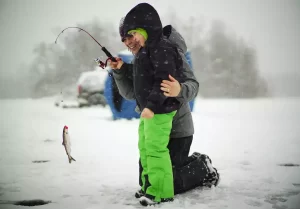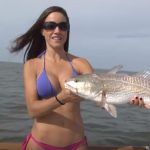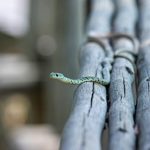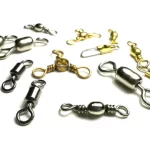Ice fishing season is in full swing, and whether the target is walleye, perch, northern pike, or trout, keeping fisheries healthy is just as important as landing a trophy catch. Invasive species and fish diseases don’t take a break in winter—they can spread through bait, gear, and even frozen water, threatening fish populations and water quality.
Here’s how to keep gear clean, fish safe, and ice fishing spots thriving all season long.

1. Dispose of Bait Properly
Viral Hemorrhagic Septicemia (VHS) is a deadly fish virus that can spread through contaminated bait, even when frozen. Tossing bait into the water or onto the ice can introduce harmful species like zebra mussels or unwanted pathogens.
Best bait practices:
- Use only commercial bait from a single body of water.
- Dispose of unused bait in the trash—never in the water or on the ice.
- Avoid transporting bait between lakes, as it can spread invasive species.
2. Clean Gear Before Leaving
Boots, sleds, and ice augers can carry microscopic invasive hitchhikers, even in freezing temperatures. Moving between lakes or different fishing spots can unknowingly spread harmful species.
Quick gear cleaning tips:
- Brush off mud, ice, and plant debris from all equipment.
- Wipe down rods, shelters, and sleds after every trip.
- Let all gear dry completely before heading to a new location.
3. Drain Water from Sleds, Buckets & Coolers
Transporting water between fishing spots can introduce fish diseases and invasive species into new environments. To store the catch safely, fresh ice is a better option than lake or river water.
Better fish storage solutions:
- Always drain livewells, coolers, and ice shacks before leaving.
- Use clean ice or dry storage methods for keeping fish fresh.
- Never transport water between lakes—it’s one of the fastest ways to spread invasives.
Ice Safety Reminders
Before heading out, always check ice conditions, regulations, and safety guidelines. Here are the recommended ice thickness levels for different activities:
- 4 inches – Safe for walking
- 5–7 inches – Safe for snowmobiles
- 8–12 inches – Safe for vehicles
Help Protect Fisheries for the Future
Following these simple steps helps ensure walleye, perch, pike, and trout fishing remains strong for years to come:
CLEAN gear before leaving the water
DRAIN water from sleds & coolers
DRY everything before the next trip
DISPOSE of bait properly
Some fish caught while ice fishing—including trout and walleye—come from the National Fish Hatchery System, which has supported fish populations for over 150 years. Want to learn more about ice fishing safety, gear, and best practices? Check state fishing regulations for rules on bait use, ice shelters, and invasive species prevention. Protecting fisheries starts with small actions—make a difference on the next trip!
Image/Source: FWS





